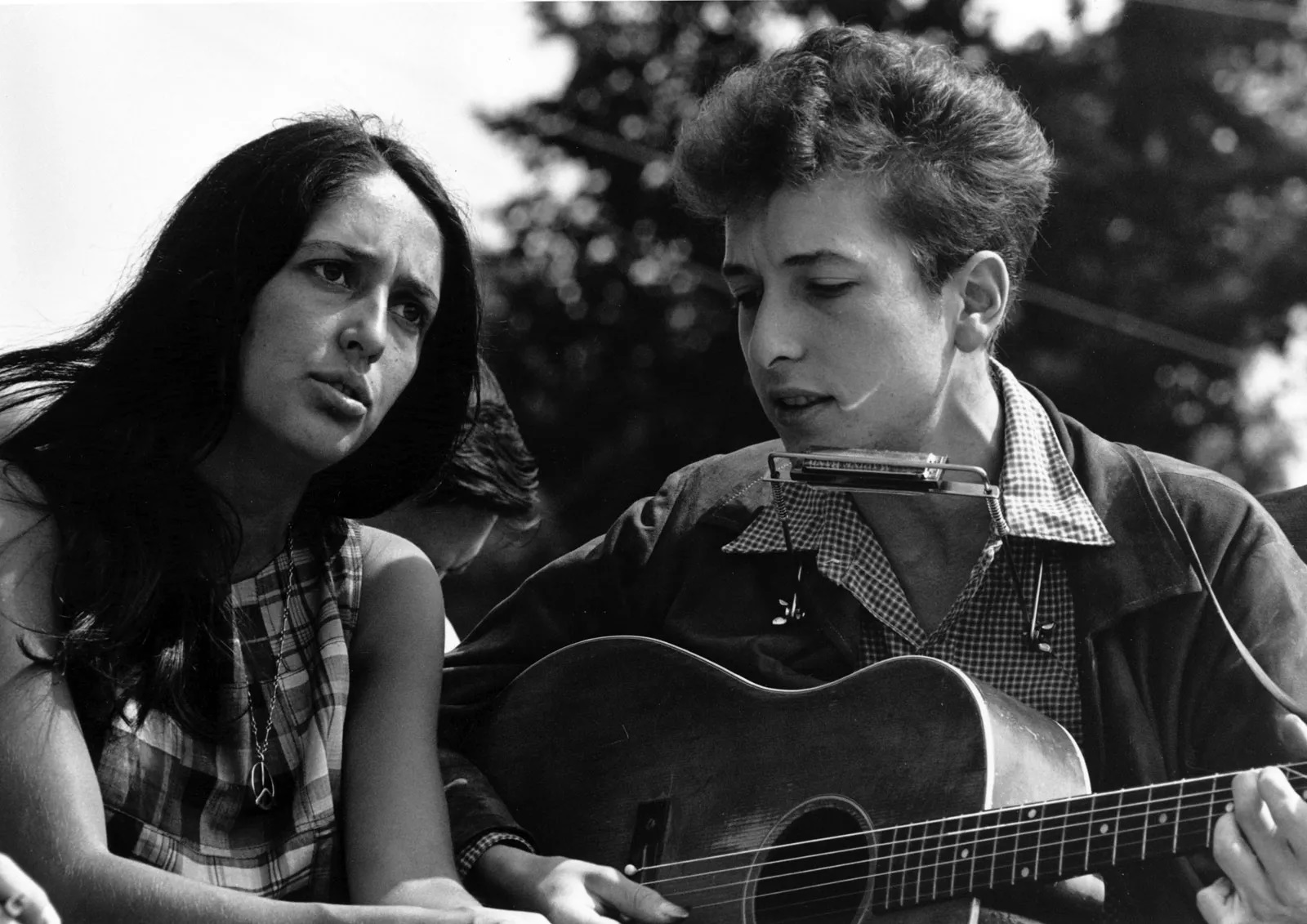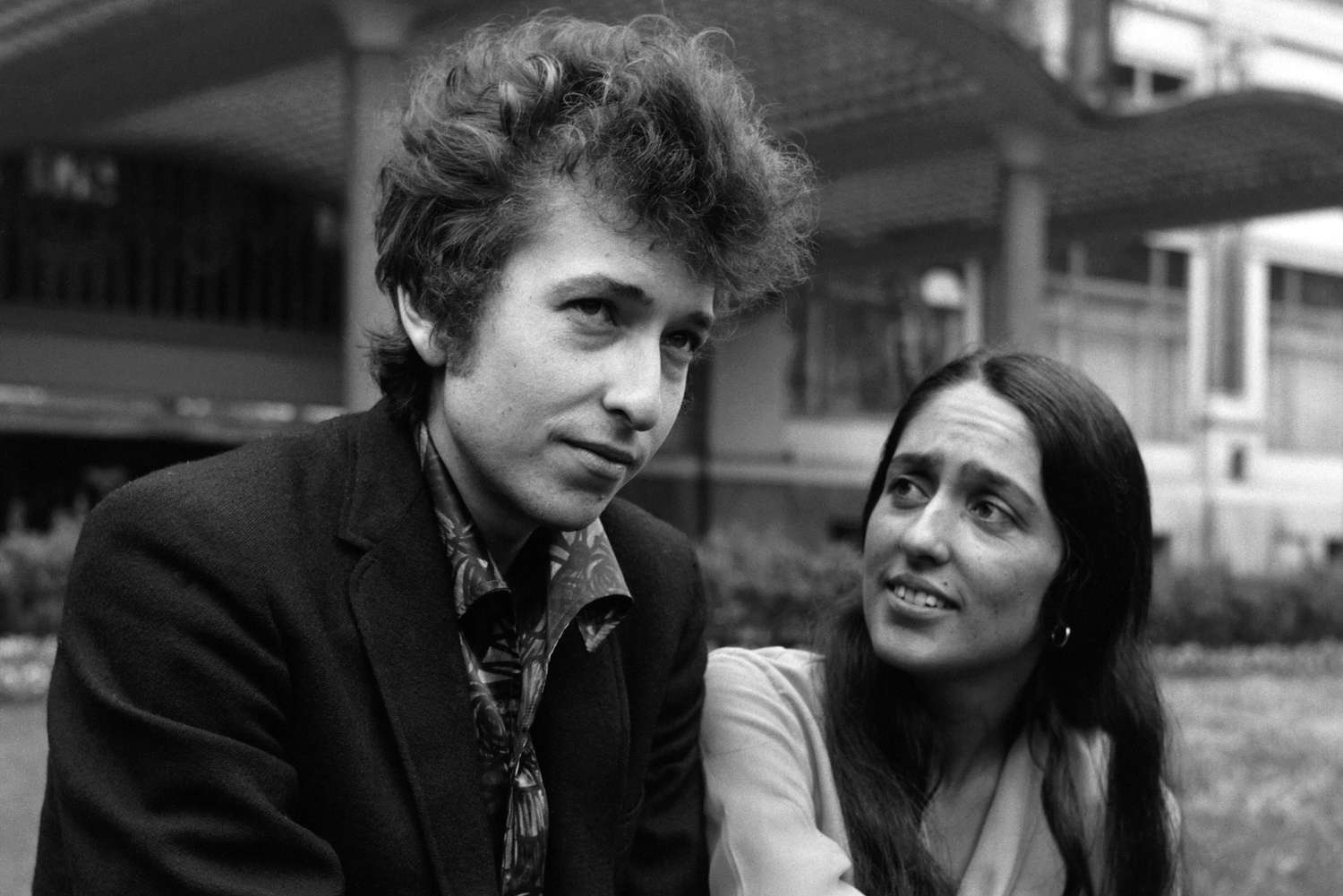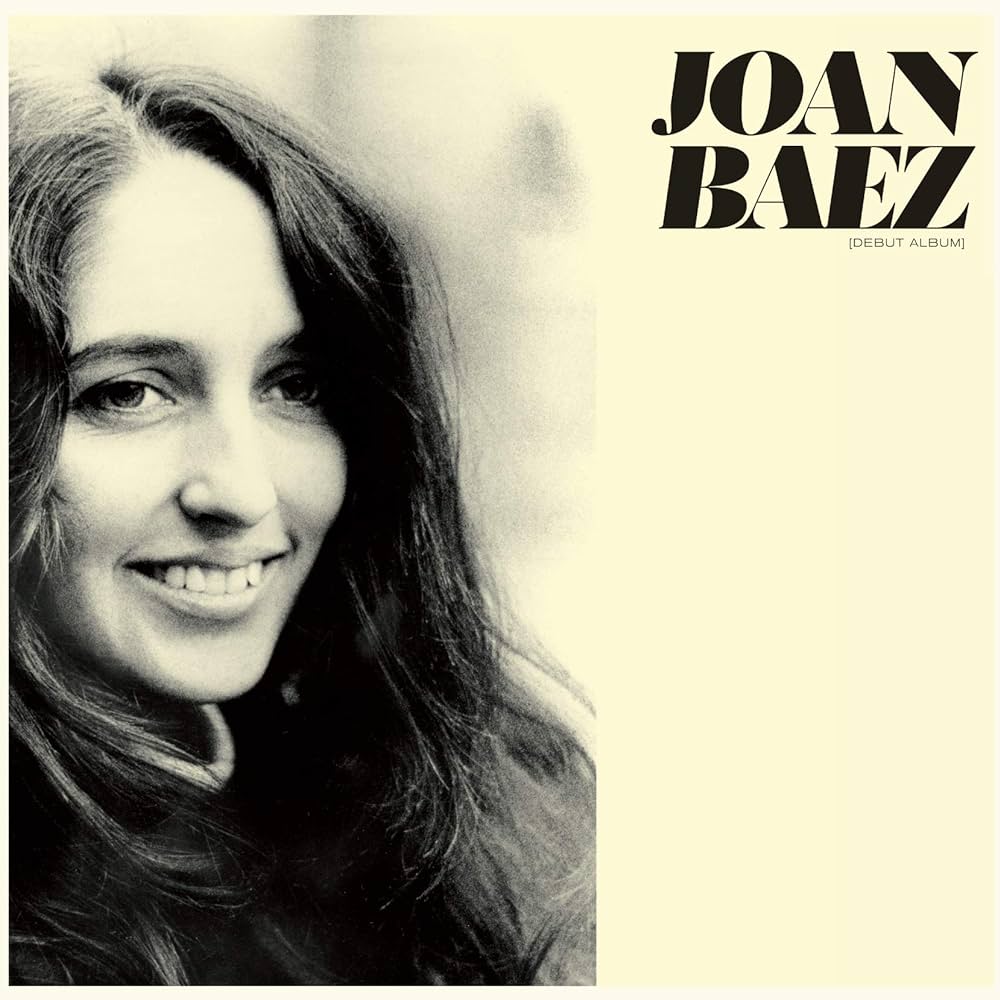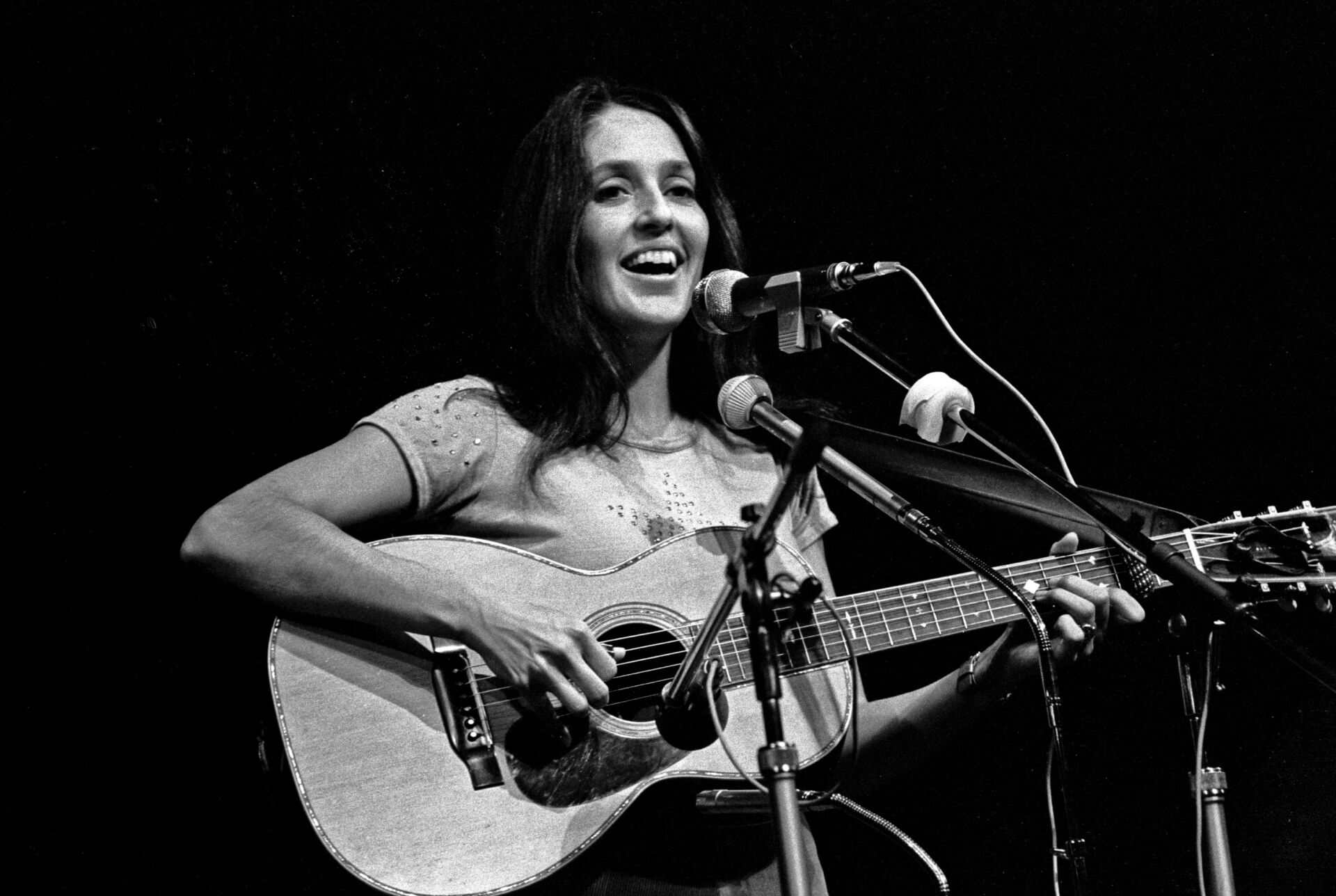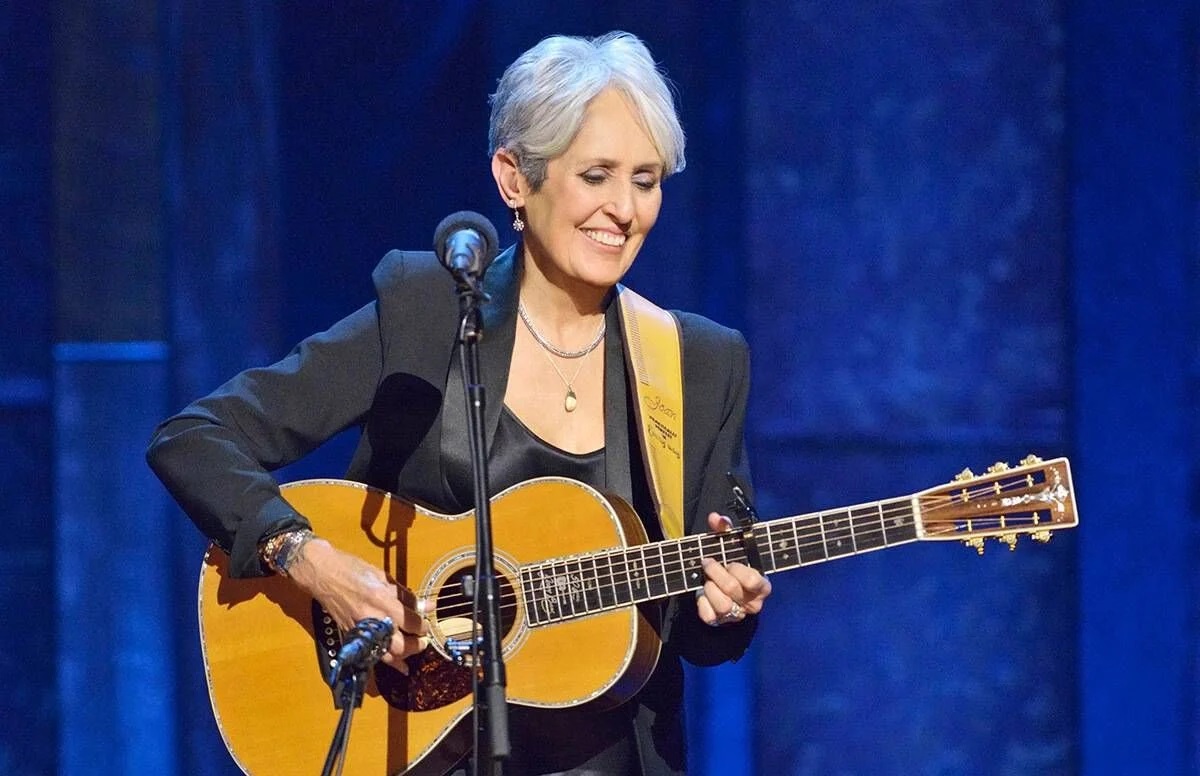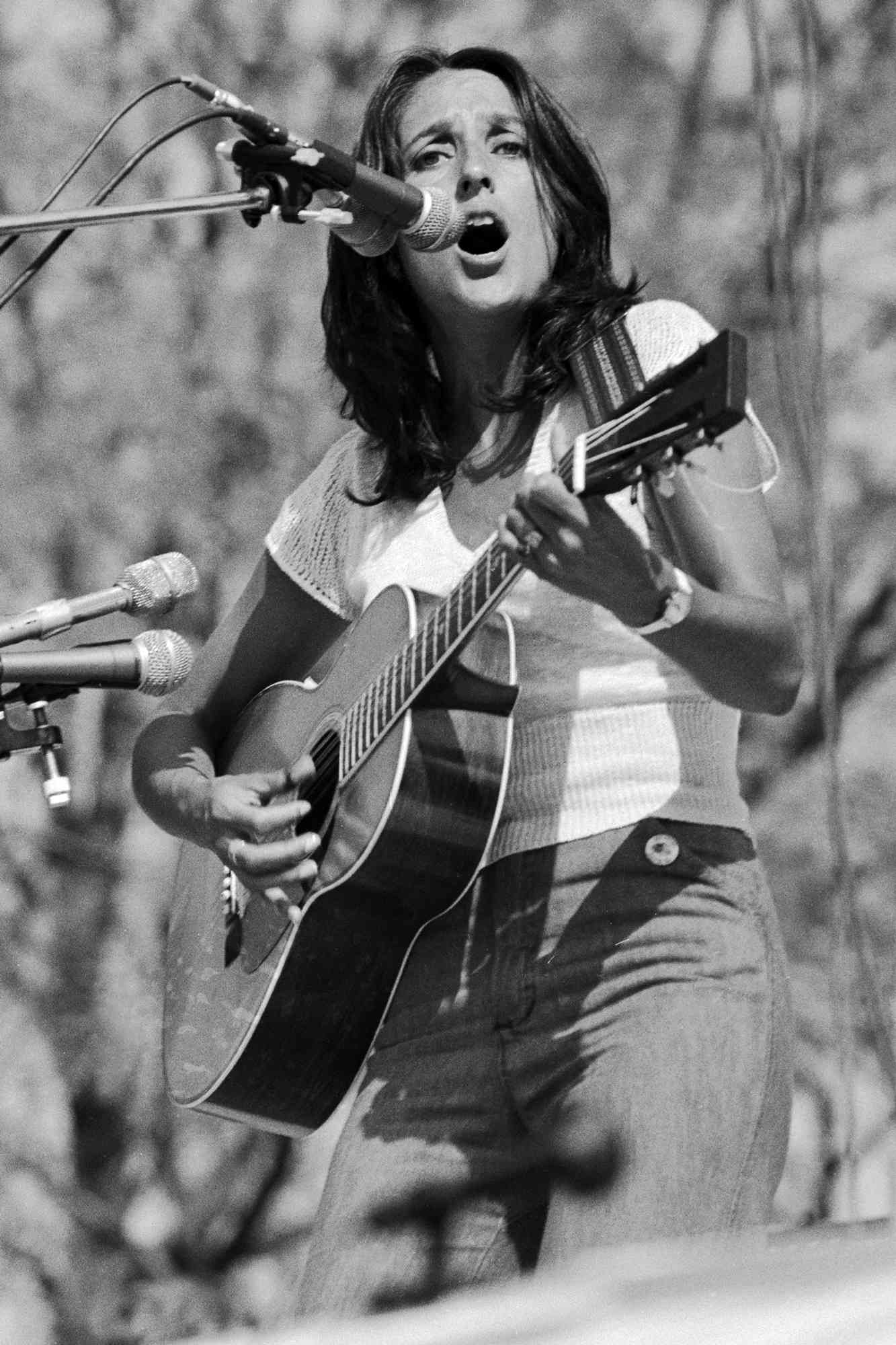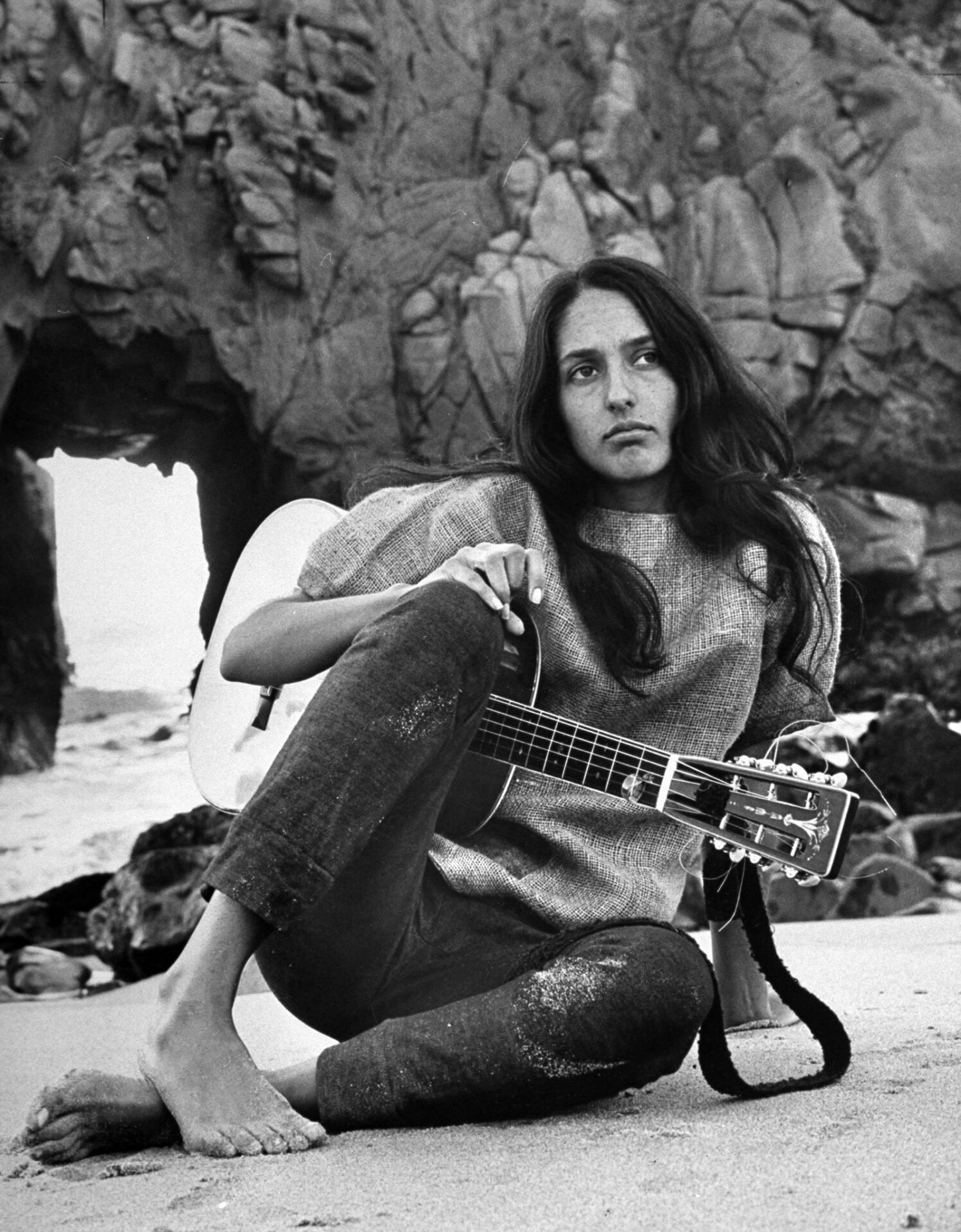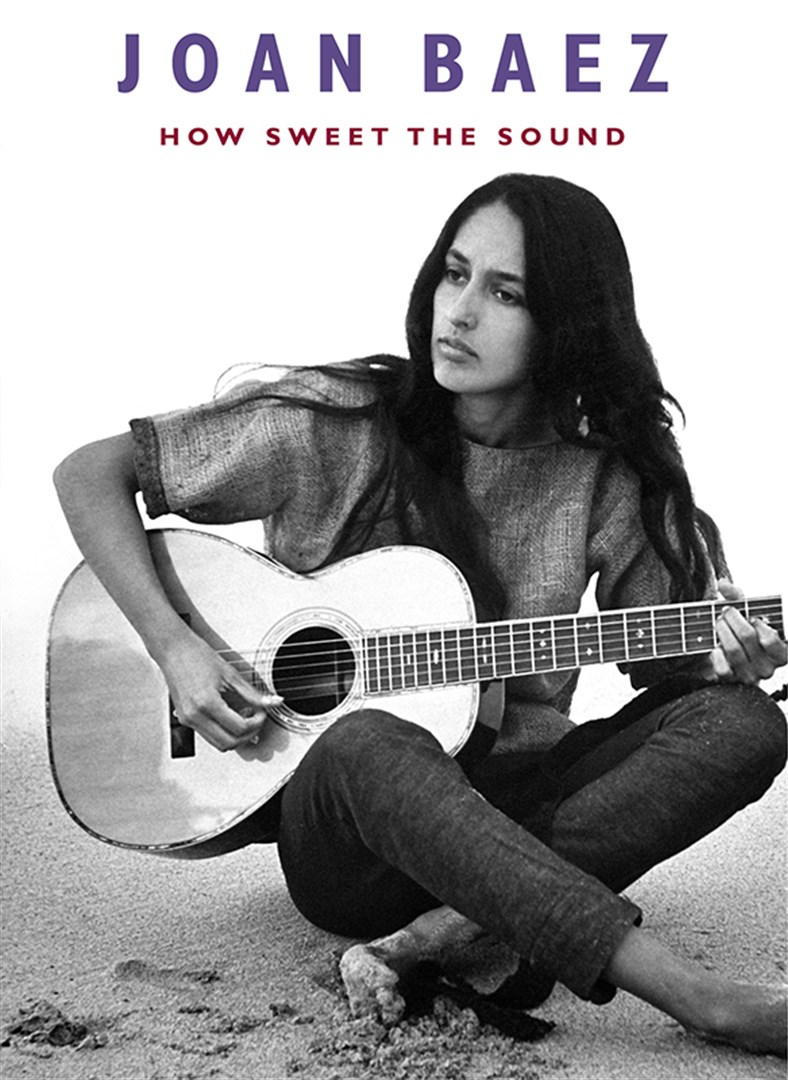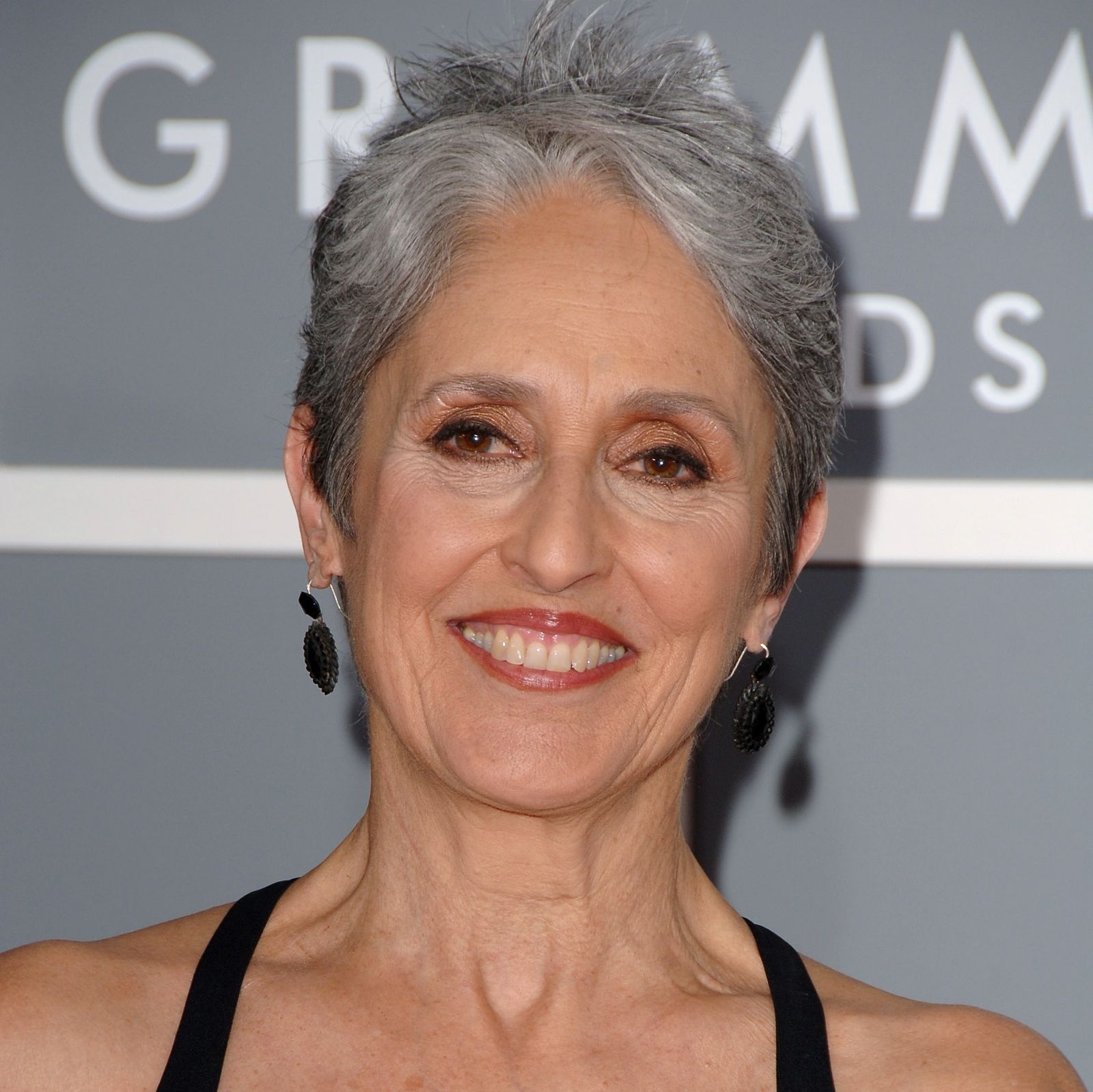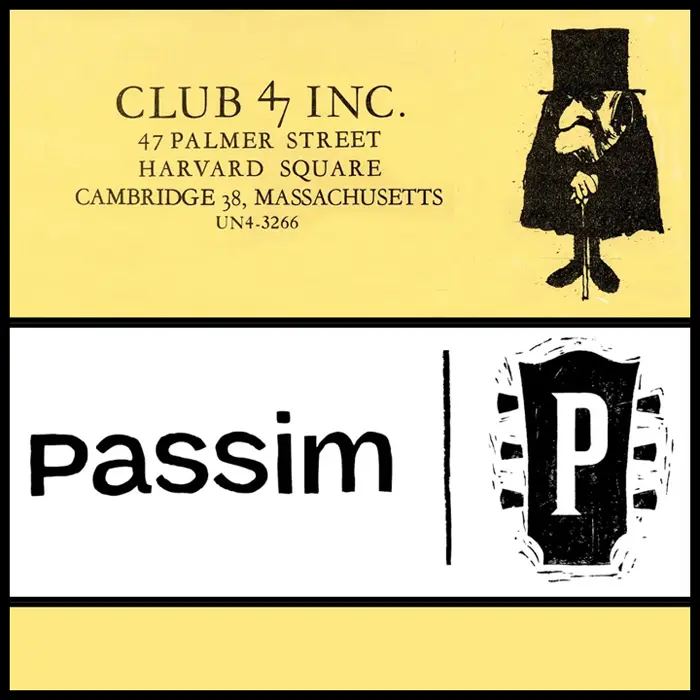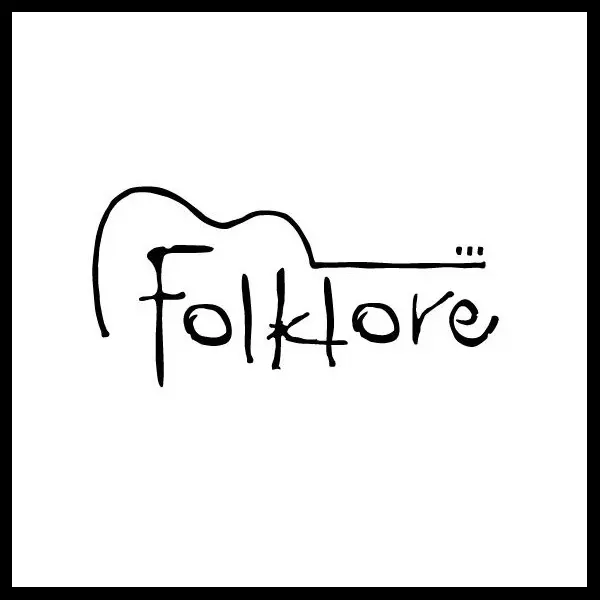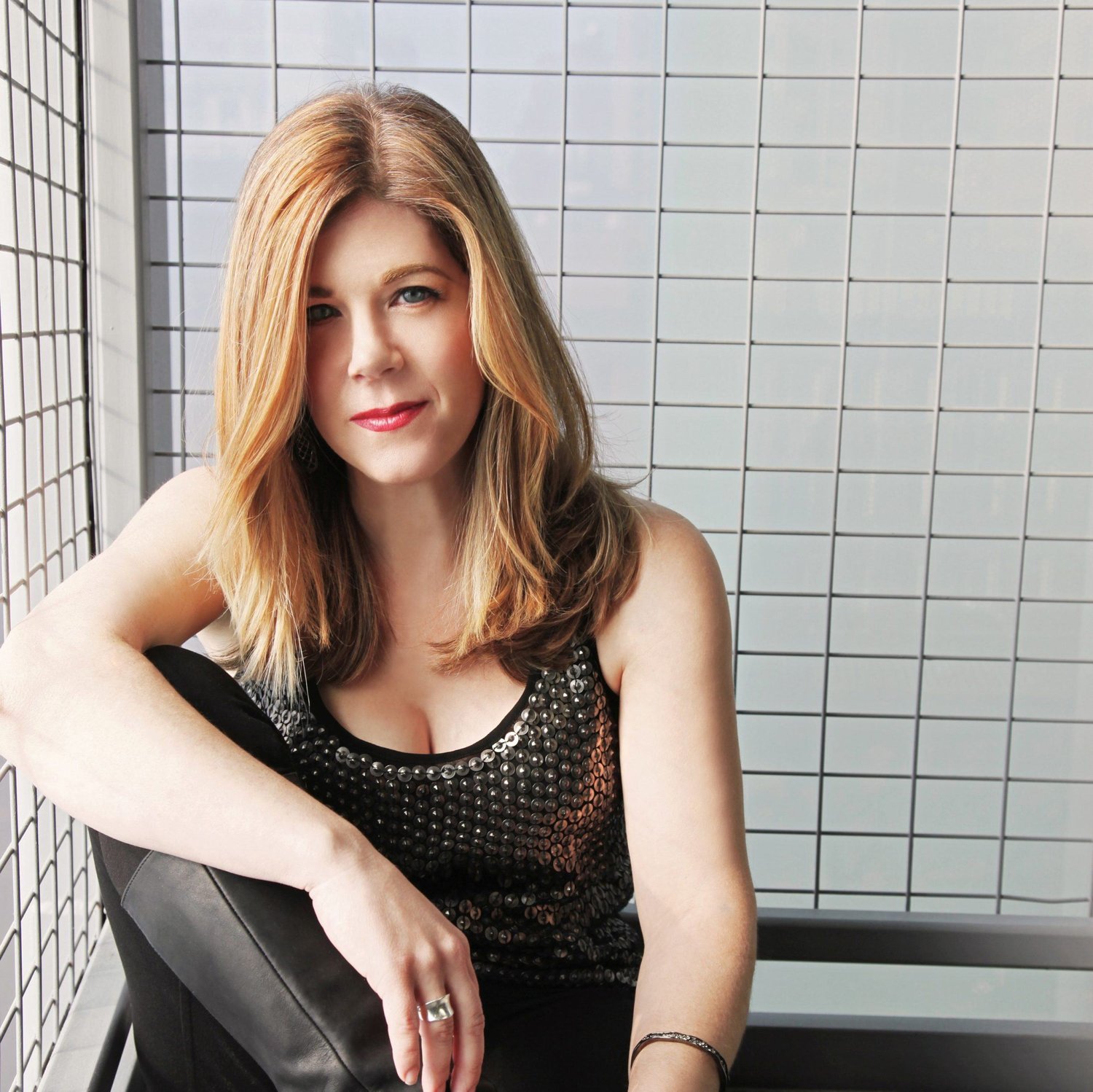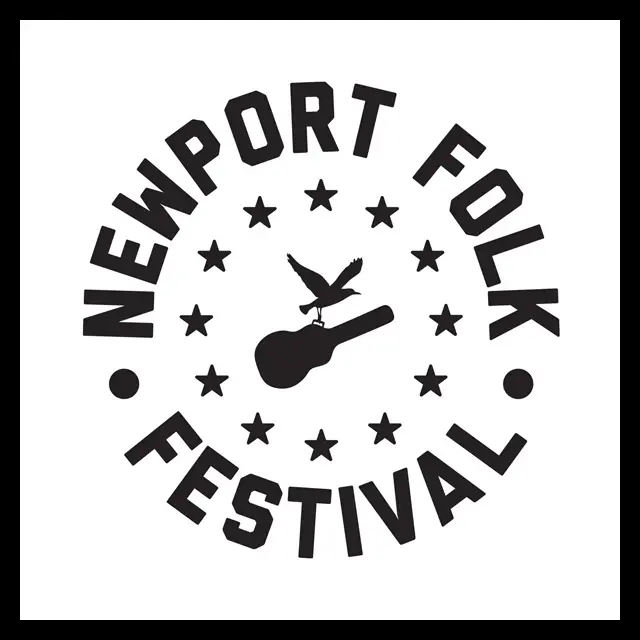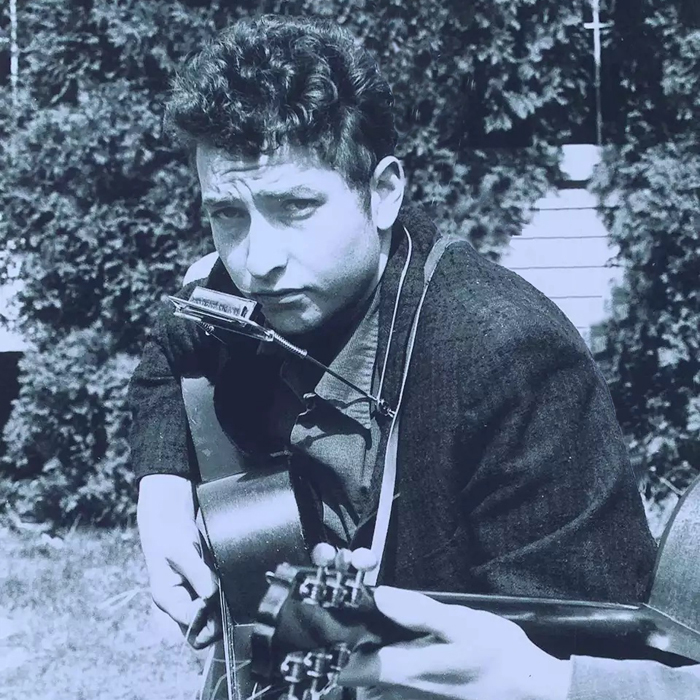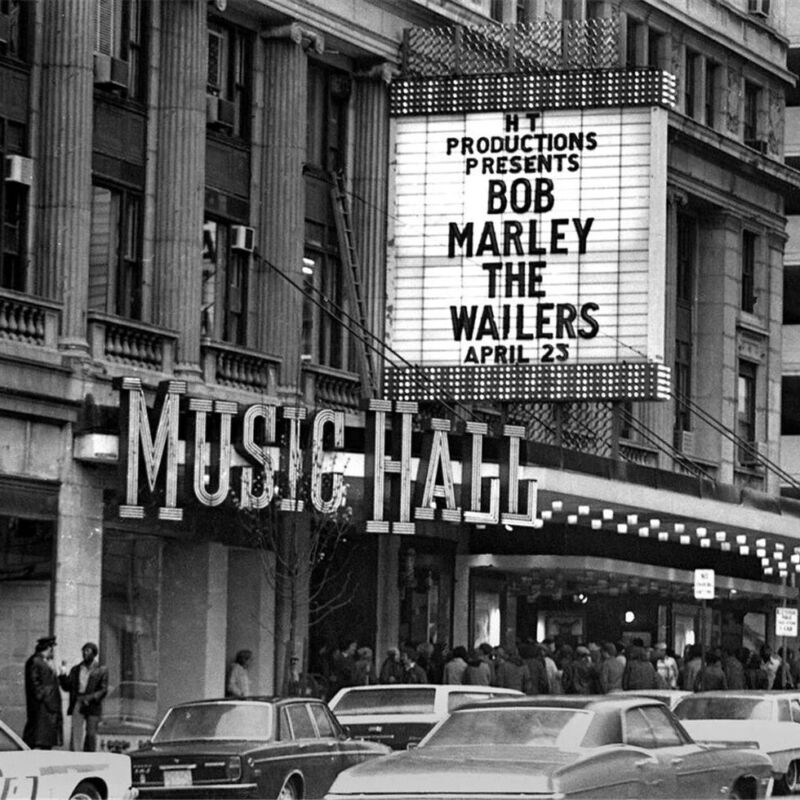Joan Baez
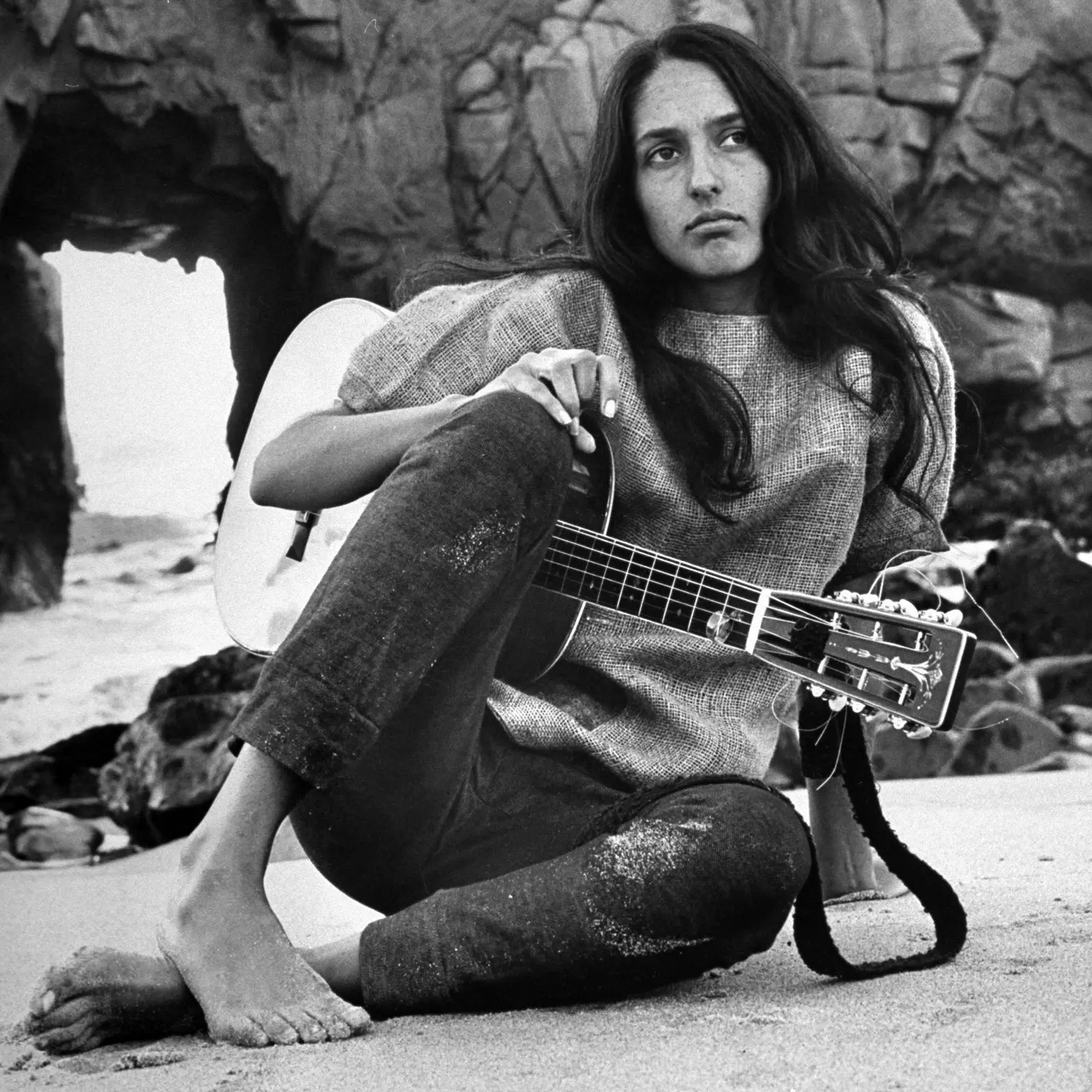
Native New Yorker Joan Baez traces the beginning of her career as folksinger and activist to 1959, after her family had moved to Belmont, Massachusetts. Her father had landed a teaching spot at MIT and she was a student at Boston University, but she soon realized that she was better cut out to be a performer on the then-burgeoning Boston and Cambridge acoustic scene.
Thinking back to that transition period, Baez, who was born in 1941 and got her first guitar when she was 15, laughed. “I was never at BU long enough to even make a decision to quit,” she said. “I was only there about six weeks. I wasn’t cut out for school in the first place. I had no idea about anything, just kind of an instinctive and spontaneous and extremely neurotic life. The guitar was my salvation and the singing was my salvation. I remember one teacher whose class I was flunking. He said if you bring your guitar and sing a couple of songs, I’ll pass you. And he did, and that was the only passing grade I got.”
CLUB 47, FIRST FOLKLORE ARTIST, ACTIVISM
Baez was in her late-teens when she first played at the original Club 47, and was likely one of the first folk singers to perform in what was, at the time, still a jazz venue. But she was an immediate hit and was soon a regular fixture there for Sunday afternoons performances. In 1960, she became the first artist on Boston-based Folklore Productions’ managerial roster, which grew to over two dozen others in the following years.
In later years, Baez became known as much for her political leanings as for her singing, since she was an outspoken leader in the anti-war movement and for various social causes. This led to her making plenty of friends, but more than a few enemies. “Conservatives hate her, but only fools doubted her integrity,” according to an entry in The Penguin Encyclopedia of Popular Music, and Baez has made it clear that she likes that line. “Make me a bumper sticker!” she once said.
NOTABLE COLLABORATIONS, CAREER/PERSONAL HIGHLIGHTS
Although the politics added an edge to her material, it’s the combination of her music and naturally beautiful voice – usually accompanied by her battered old Martin guitar – that has always drawn the crowds. She’s known for having done famous duets with singers including Mimi Farina, Mary Chapin Carpenter, Dar Williams, Indigo Girls and Bob Dylan (yes, they were an item; just listen to her song “Diamonds and Rust” to learn all about it), and has collaborated with an expansive variety of other artists.
Career and personal highlights include: her first solo appearance at the Newport Folk Festival in 1959; taking part in the Civil Rights March from Selma to Montgomery in 1965; playing the first night at Woodstock in 1969; being featured on the soundtrack for the film Silent Running in 1972; founding the Humanitas International Human Rights Committee in 1979; making The York Times‘ bestseller list with her autobiography And a Voice to Sing With in 1987; performing at Barack Obama’s inauguration in 2009; having her 1960 Vanguard album Joan Baez inducted into the Grammy Hall of Fame in 2011; and being inducted into the Rock & Roll Hall of Fame (by Jackson Browne) in 2017.
Baez’s hair has changed from long and dark to short and white, she’s been in the spotlight on stages across the globe, her set lists range from pure folk to folk-pop – though there’s always a chance that she’ll throw in an a cappella tune – and, unsurprisingly, she’s has a wall covered with gold records in her home. In June and July 2025, the Folk Americana Roots Hall of Fame at Boch Center in Boston will hold an exhibition called “Joan Baez: A Life of Music, Art, and Activism” featuring items from her past including handwritten lyrics, poems, photographs, clothing, jewelry and concert posters.
(by Ed Symkus)

